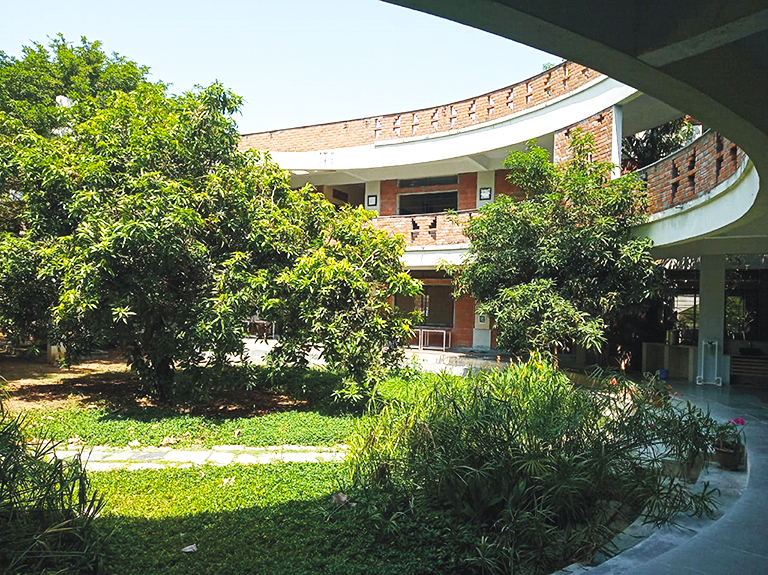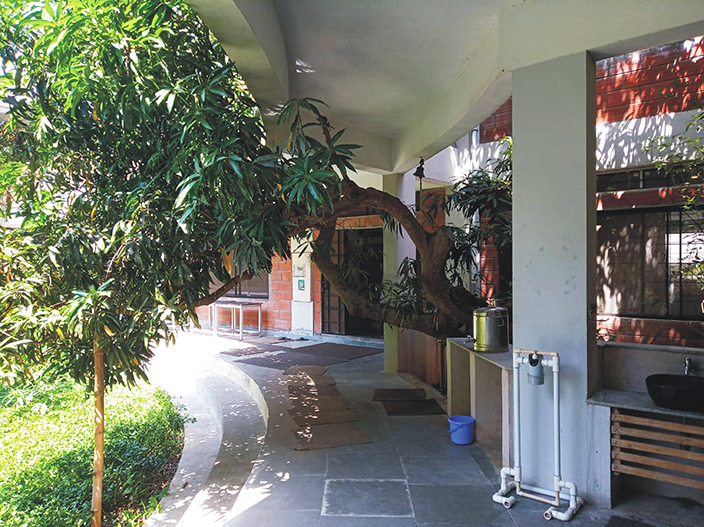Registered with the Registrar of Newspapers for India under R.N.I 53640/91
Vol. XXXII No. 15, November 16-30, 2022
How ‘Green’!
-- by Shobha Menon
Green Hills, Green Nest, Green Paradise, Green Valleys, Green Acres, Green Mantra, Green Woods, Green Retreat and Green Vista are all names of new townships / apartments/ gated communities across India! And while the past decade has definitely seen more sustainable design and construction practices across metro cities including Chennai, the gaps are stark too.
Since 2001, the Indian Green Building Council (IGBC), part of the Confederation of Indian Industry (CII) has been initiating green accounting systems. Of the 25 to 30 parameters, 7 to 8 are mandatory while others are rated according to compliance levels as Silver, Gold and Platinum. IGBC’s Green Residential Society rating system for existing multi dwelling residential buildings is valid for a period of 3 years from the date of issue of the certification.
Meanwhile, the GRIHA (Green Rating for Integrated Habitat Assessment) tool adopted by the Ministry of New and Renewable Energy, is being endorsed as the ‘National rating system for green buildings in India’ since 2007, an indigenous one developed specifically to suit Indian climate and construction practices and aligned with the national regulatory framework and policies.
Initially, the rating systems were adopted in commercial buildings and now extend to varied types of buildings and communities. Sustainability expert, Mahesh Kumar from Transgreen, has been working in this area since 2010. He says, “ Compared to the early days when certification began, there are now greener designs and materials. Even if we ensure stringent site visits, the average builder usually wants to get certification but not to increase timeline or use more labour! In case of transplanting a tree, for instance, time and cost constraints make builders go the easier, convenient ‘removal’ route. Or for proper rain water harvesting, scientific percolation points that are practically sound may not be exactly adhered to. The consumer’s role is to verify but many might be ignorant or apathetic. Only a collective responsibility can ensure the right action”!

At the new Krishnamurthy Foundation India (KFI) campus, Thazhambur, the constant visual and physical connect to the outdoors with exposed hollow clay block walls, in-situ flooring, ‘jaalis’ and minimal use of conventional closed joinery is energising. Solar photovoltaics and solar thermal systems, low flow sanitary fixtures and plant-based biological waste water treatment and re-use enhance the effect. Architect Anupama Mohanram of Green Evolution, who planned and executed this project , feels “ Interestingly, the number of people who understand the fragility of our environment since the pandemic is still only a handful . In the short term, each citizen needs to be made aware of gains like lowered electricity costs annually and water security. In the longer term, green building standards need to be part of the mandatory plan approval norms by regulatory authorities. Other options include government incentives to fund solar installation (for eg. 50% of initial cost funded) and waste water treatment systems.”

Meanwhile, with the building sector across India projected to grow four-fold in the next two decades, real estate ads continue to promise ‘vast open lush green spaces that protect you against the damaging effects of air pollution and depression and stress and the ultimate experience of bliss and serenity, and also yield greater returns on investments’. Seriously?
Neha, founder of Enverte Consultancy, says, “In spite of pandemic, there has been a lot of interest in certification over the last ten years. Many builders go for it since it increases market visibility and viability. The government incentives differ from state to state. With more compliances to ensure, more expertise and care is required among contractors with respect to design.
Each builder has a different standard. If their standard is good, already 50 per cent of requirements have been met, and it will be easier for them to scale up. Considering that the average life of a building is about 60 years, there will be about 10 per cent increase in building costs, initially. Once the building is operational, all the extra investment can be reversed within 5 years, and you will accrue savings for the next 50 years!”
Meanwhile veteran architect P.T. Krishnan, raises some concerns, “We need to be looking at a sustainable, meaningful solution to environmental issues by addressing these at the planning or manufacturing stages rather than products masked under the green guise! Awareness creation among users is even more important than certification. ‘Green’ is not a ‘single’ commodity that can be acquired. Sensible planning and design should in itself deliver a good ‘rating’. A certification process must not be used for commercial exploitation!”
Anupama feels, “If a building / development is sensitively planned, taking into account available technologies with the aim of reducing the burden on the environment, then certification is unnecessary. But since most people are not aware at this point, the certification guides provide this as a third party approval/ stamp of validity! However lack of follow up is certainly a drawback. Green Certification should only be valid for one year, and renewal should be the norm!”
Experts are hopeful that consistent public awareness campaigns can bring about change in this sector in another 5-6 years. And so, dear citizens of the gracious city of Madras that is Chennai, are we ready to get more aware and act by consciously including these green norms in our buildings and surroundings or do we simply wait for another severe, climate change – related environmental catastrophe?

